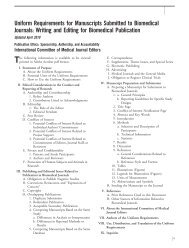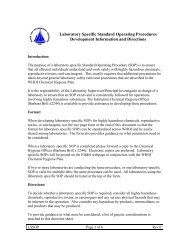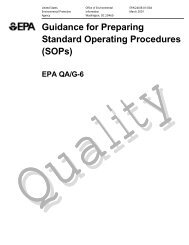Acrylamide in Baking Products: A Review Article
Acrylamide in Baking Products: A Review Article
Acrylamide in Baking Products: A Review Article
You also want an ePaper? Increase the reach of your titles
YUMPU automatically turns print PDFs into web optimized ePapers that Google loves.
534 Food Bioprocess Technol (2011) 4:530–543that lipids (triglycerides) produce a large amount of acrole<strong>in</strong>by heat treatment (Umano and Shibamoto 1987). Acrole<strong>in</strong>can further react via oxidation to generate acrylic acid or byformation of an <strong>in</strong>termediate acrylic radical. Both of the<strong>in</strong>termediates could then <strong>in</strong>duce acrylamide formation <strong>in</strong>the presence of a nitrogen source under favourable reactioncircumstance <strong>in</strong> lipid-rich foods upon heat treatment(Fig. 3). In a model system us<strong>in</strong>g asparag<strong>in</strong>e, significantamounts of acrylamide (114 μg/g of asparag<strong>in</strong>e) wereformed, but under the same condition us<strong>in</strong>g glutam<strong>in</strong>e,acrylamide was formed only at the level of 0.18 μg/g ofglutam<strong>in</strong>e. Consider<strong>in</strong>g that both am<strong>in</strong>o acids conta<strong>in</strong> anamide moiety, this may be due to differences <strong>in</strong> the amountof ammonia formation from asparag<strong>in</strong>e and glutam<strong>in</strong>erather than due to their amide moiety. Also, asparag<strong>in</strong>emay produce a three-carbon unit more readily thanglutam<strong>in</strong>e does (Yasuhara et al. 2003).Researches showed that some secondary lipid oxidationproducts can convert am<strong>in</strong>o acids <strong>in</strong>to the correspond<strong>in</strong>gv<strong>in</strong>ylogous derivatives (Hidalgo and Zamora 2007; Zamoraet al. 2007), and some lipid oxidation products can degradeasparag<strong>in</strong>e to acrylamide (Zamora et al. 2007). Theyproposed α,β,γ,δ-diunsaturated carbonyl compounds asthe most reactive, followed by hydroperoxides, likelybecause of their thermal decomposition upon heat<strong>in</strong>g.Arribas-Lorenzo et al. (2009) <strong>in</strong>vestigated the effect of oiloxidation level as well as the oil phenol profile onacrylamide formation <strong>in</strong> cookies and claimed that lipidoxidation products can be regarded as an important factor <strong>in</strong>acrylamide formation <strong>in</strong> fat-rich dry foods and that theamount and the type of antioxidant compounds of oilclearly affect acrylamide concentrations after bak<strong>in</strong>g.Capuano et al. (2010) showed that oil oxidation levelpositively <strong>in</strong>fluences the formation of acrylamide <strong>in</strong>different formulations with three oil samples at differentoxidation levels, but catech<strong>in</strong> presence reduced acrylamideformation <strong>in</strong> systems conta<strong>in</strong><strong>in</strong>g unheated oil and partiallyoxidized oil whilst no significant lower<strong>in</strong>g effect wasobserved when highly oxidized oil was used.In sugar-conta<strong>in</strong><strong>in</strong>g model systems, lipid oxidation levelmoderately <strong>in</strong>fluenced acrylamide formation, whilst theeffect became more pronounced <strong>in</strong> systems with low watercontent and with low carbohydrate concentration. The typeof oil or fat used <strong>in</strong> the formulation also <strong>in</strong>fluencesacrylamide levels (Fig. 4), with acrylamide formationhigher <strong>in</strong> systems conta<strong>in</strong><strong>in</strong>g sunflower oil than <strong>in</strong> systemsmade with palm oil, which has a lower susceptibility(Capuano et al. 2010).Fig. 3 Hypothesized formation mechanisms of acrylamide from an am<strong>in</strong>o acid and a lipid (Yasuhara et al. 2003)







